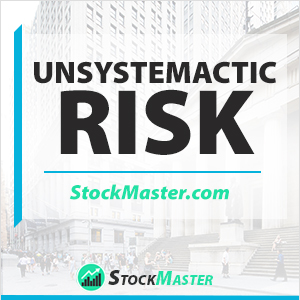 What is Unsystematic Risk?
What is Unsystematic Risk?
Definition: Unsystematic risk refers to the danger that investors face when they buy certain asset. This risk is specific to the asset that the investor buys hence sometimes called specific risk.
A risk that is specific to a particular asset in your portfolio is avoidable through diversification. Constructing a portfolio where different assets have different unsystematic risk is what investors call portfolio diversification.
Explaining Unsystematic Risk Example
The concept of unsystematic risk is crucial for investors who want to hedge their portfolio. However, it is impossible to grasp the significance of unsystematic risk without understanding another type of risk called systematic risk. Unlike unsystematic risk, systematic risk affects the whole economy. Usually, investors call this volatility risk or market risk because it represents the kind of danger that is inherent in the market. The danger that systematic risk poses affects the entire range of asset classes, from equities to bonds. Put together, the systematic risk and the unsystematic risk amount to the total risk of a given portfolio.
Unsystematic risk, by itself, is an important issue that all investors must address. Some examples of unsystematic risk include a change in the management of a company, a company involved in a scandal, employees of a company striking, regulatory changes that affect a particular industry and so on. When looking for companies to include in one’s portfolio, it is imperative to be aware of such risks.
How Does Unsystematic Risk Affect Investors?
In September 2015, Volkswagen admitted to cheating emission tests in a number of its vehicles in the US. Apparently, the company was using special software to dupe US investigators into believing that VW cars produced low emissions. The company needed the cars to adhere to US regulations of diesel engines whose emissions are within a certain level. Once the news got out, the VW stock on the Frankfurt Stock Exchange tumbled. Between sept 18, 2015 and October 2, 2015, the VW stock shed over 43% in value.
Assuming Investor A had 1,000 of VW shares on 18 September where each share traded at €162.40 ($183.79). At the time, the value of Investor A’s portfolio was $183,790. In less than two weeks (2 Oct 2015), a single VW share was €92.36 ($104.52) in value. That means the new value of Investor A’s portfolio was down to $104,520, a difference of $79,270!
From the case of Investor A, it is clear that unsystematic risk is problematic for investors who have a portfolio with a single asset. Fortuitously, investors can avoid unsystematic risk through portfolio diversification.
How diversification helps to erode the danger of unsystematic risk
Back to Investor A. After making huge losses from the VW scandal, Investor A decides to add more assets in his portfolio to make it more diverse. The new portfolio looks like this:
| Asset | Shares Bought | Share Price | Asset Value |
| Volkswagen | 1,000 | $95 | $95,000 |
| Amazon | 1,000 | $1,000 | $1,000,000 |
| Lufthansa | 1,000 | $10 | $10,000 |
| Royal Dutch Shell | 1,000 | $15 | $15,000 |
| Deutsche Bank | 1,000 | $5 | $5,000 |
| Portfolio Value | $1,125,000 | ||
After five years, the value of Investor A’s portfolio is worth 82% more. However, some stocks that have declined within that period, as shown below.
INVESTOR A’s PORTFOLIO VALUE AFTER FIVE YEARS
| Asset | Shares Bought | New Share Price | Asset Value | Return |
| Volkswagen | 1,000 | $148 | $148,000 | 55.79% |
| Amazon | 1,000 | $1,890 | $1,890,000 | 89% |
| Lufthansa | 1,000 | $1.5 | $1,500 | -85% |
| Royal Dutch Shell | 1,000 | $6 | $6000 | -60% |
| Deutsche Bank | 1,000 | $0.2 | $200 | -96% |
| Portfolio Value | $2,045,700 | 81.84% | ||
Five years later, it is clear that Lufthansa, Royal Dutch Shell, and Deutsche Bank declined massively. However, the massive gains by Amazon and Volkswagen lifted the value of the entire portfolio to 81.84% compared to five years ago. Here, the trick that Investor A used was to spread his portfolio across assets from different countries and different industries.
Since the scandal, VW was able to collect itself and grew its share price. Since Investor A was confident the stock would bounce back, he continued to hold the VW shares. In the end, Investor A was able to avoid the danger of unsystematic risk of three stocks by diversification.
